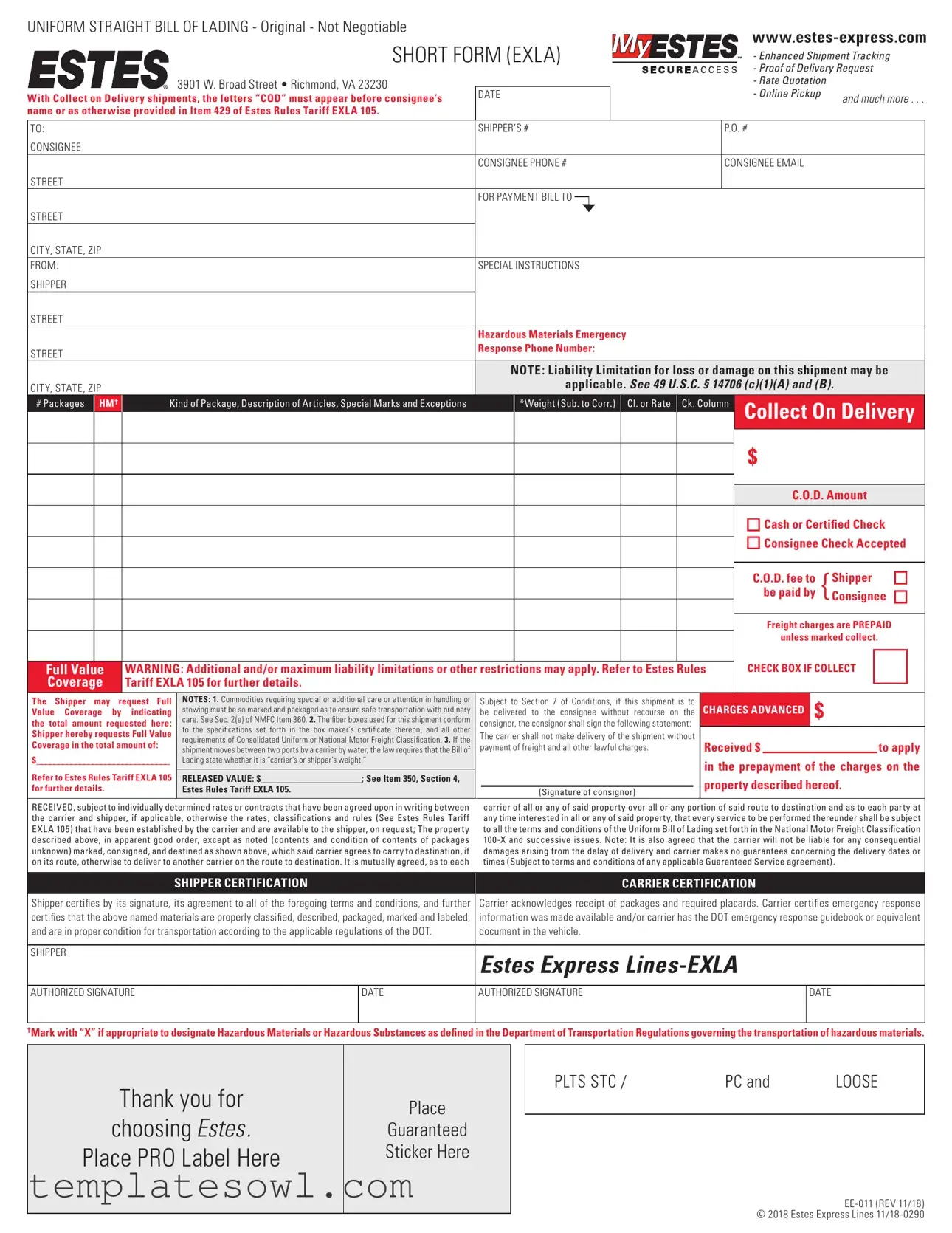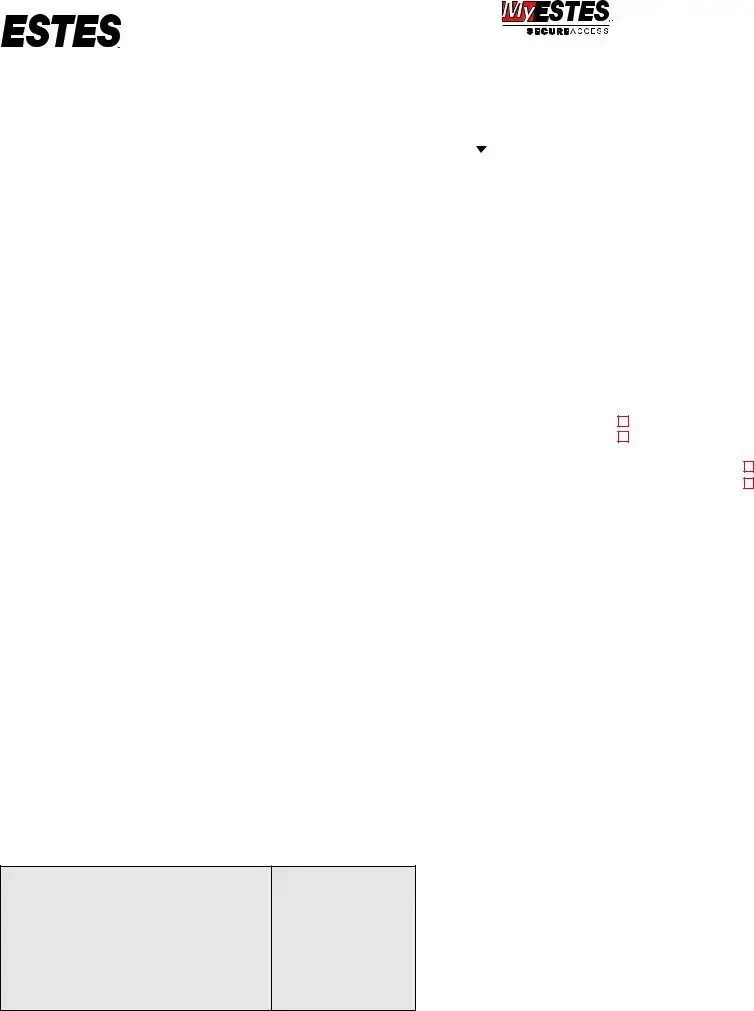What is the Estes Express Bill Of Lading form?
The Estes Express Bill Of Lading form is a shipping document that serves as a receipt for cargo and outlines the terms of the transport agreement between the shipper and the carrier. It is a non-negotiable document used in the transportation industry to ensure clarity on shipment details, responsibilities, and liabilities. This form, also known as a Uniform Straight Bill of Lading, includes information about the shipper, consignee, shipment contents, payment, and any special instructions.
How do I fill out the Estes Express Bill Of Lading form?
To fill out the form, start by providing the necessary information for both the shipper and the consignee. This includes names, addresses, phone numbers, and email addresses. Next, specify the shipment details such as the number of packages, kind of package, description of articles, weight, and collect on delivery (C.O.D.) amount if applicable. Include any special instructions and notes related to hazardous materials, as well as payment terms. Make sure each section is completed accurately to ensure a smooth shipping process.
What does "C.O.D." mean on the form?
C.O.D. stands for Collect on Delivery. This indicates that the consignee will pay the freight charges or the total amount due upon delivery of the shipment. To specify a C.O.D. shipment, the letters “COD” should appear before the consignee's name. C.O.D. is a common payment option for shipments, ensuring that the carrier receives payment before handing over the goods.
What should be included if shipping hazardous materials?
When shipping hazardous materials, it is crucial to mark the form appropriately. The relevant sections must include a designation, such as an "X" in the designated area, to indicate the presence of hazardous materials or substances. Additionally, the shipper should provide an emergency response contact number and ensure that the materials are properly classified, described, packaged, marked, and labeled as per regulatory requirements. Failure to comply with these regulations can lead to significant liability issues.
What are the liability limitations on the shipment?
The Bill Of Lading outlines specific liability limitations for loss or damage to the shipment. Per the relevant statutes, such as 49 U.S.C. § 14706, these limitations may apply unless the shipper opts for Full Value Coverage. It is important for shippers to understand these limitations, as they may vary depending on the nature of the shipment and whether any additional charges were advanced for greater coverage.
What is the process to request Full Value Coverage?
To request Full Value Coverage, the shipper must indicate the total amount desired in the appropriate section of the Bill Of Lading form. The shipment must also comply with the regulations under Section 7 of the conditions described. It is essential to understand that Full Value Coverage ensures that the shipper receives full reimbursement in the event of loss or damage, provided that all conditions are adhered to and the appropriate fees are paid.
Where can I find more information or assistance regarding the Estes Express Bill Of Lading?
For additional information or assistance, you can visit the Estes Express website at www.estes-express.com. The website offers resources such as enhanced shipment tracking, proof of delivery requests, rate quotations, and guidelines for completing the Bill Of Lading. Moreover, customer support representatives are available to provide assistance needed to ensure compliance and smooth shipping experiences.

